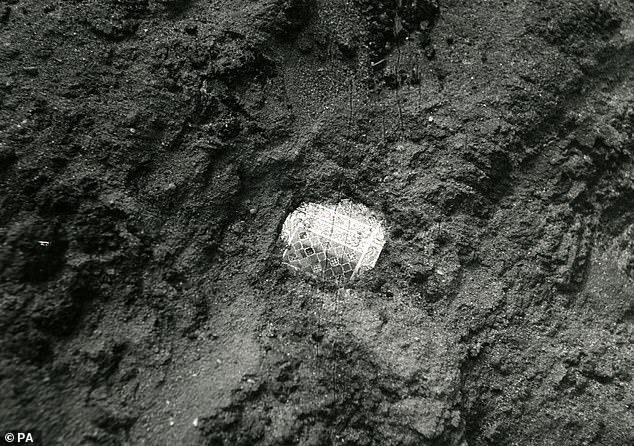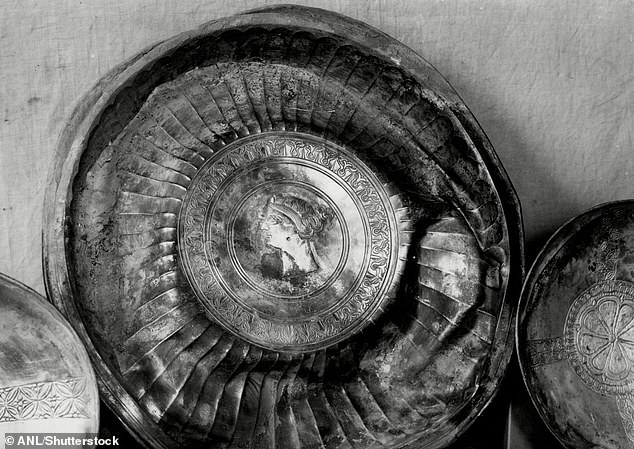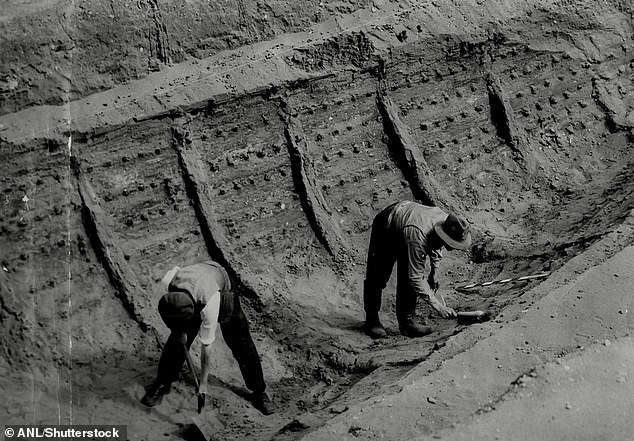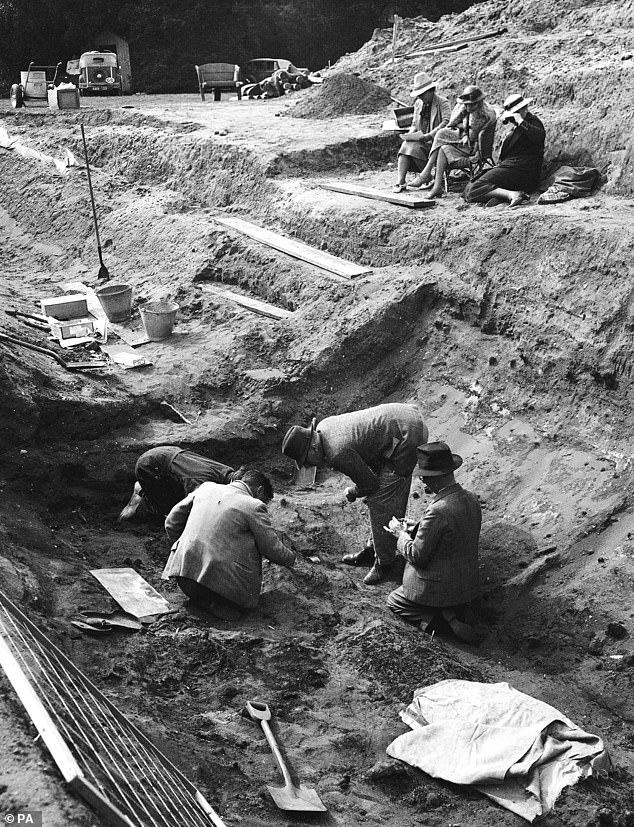For nearly 100 after its discovery, the Sutton Hoo burial site in Suffolk was assumed to be the resting place for a high-ranking royals.
Out of about 20 burial mounds at the site, the most famous was thought to hold the remains of a 90-foot ship and a man – possibly a king – surrounded by opulent treasures, including a decorated helmet, gold coins and an iron sword.
However, a researcher now puts forward an alternative theory.
Dr Helen Gittos, a historian at the University of Oxford, thinks the graves belonged to British men who fought for the Byzantine Empire.
The Byzantine Empire, also known as the Eastern Roman Empire or Byzantium, was a powerful civilization based at Constantinople (modern-day Istanbul).
These early medieval soldiers were recruited from Britain into the Byzantine army in AD 575 and fought Sasanians, the ancient Iranian dynasty.
‘Those who returned brought back with them metalwork and other goods which were current, and distinctive, and not the kinds of things that were part of normal trading networks,’ she says.
‘This opens up a startlingly new view onto early medieval English history.’


The Sutton Hoo ship burial dates to between around AD 610 and AD 635, when the site belonged to the Anglo-Saxon kingdom of East Anglia.
In AD 575, the Byzantine army ‘urgently’ needed more troops because of the renewed war with the Sasanians, the academic points out.
Justin II, the Eastern Roman emperor from 565 until 578, conducted a major recruiting campaign of troops from western Europe.
Dr Gittos argues that this included men from Britain who were attracted by the ‘allure of adventure and reward’.
‘After all, we know that there were already established connections between Byzantium and Britain,’ she adds.
Dr Gittos analysed all the evidence from Sutton Hoo as well as other notable English sites including the Prittlewell burial site, near Southend in Essex.
Previously described as ‘work of the highest quality’, the Sutton Hoo objects include Byzantine silver spoons, copper-alloy vessels, shield and sword, a lyre, a silver plate and the famous Sutton Hoo helmet.
The man buried in a ship at Sutton Hoo had not only silver and copper dishes from the east Mediterranean, but also lumps of bitumen and textiles from Syria.



Meanwhile, at Prittlewell, a man was buried in a wood-panelled chamber with a copper flagon originally from the shrine of St Sergius in Sergiopolis, Syria.
And at Taplow in Berkshire, a man was buried with a pedestal bowl so rare only three comparable examples are known, all from Egypt.
These graves – commonly known as ‘princely burials’ in reference to their grandness – share a number of characteristics.
‘They tend to contain objects that were made in the eastern Mediterranean which were current, rather than old, when buried, and were of very unusual types,’ Dr Gittos says.
‘Their burials were carefully orchestrated and included exotic objects imported across great distances.
‘The graves themselves were monumental, in that they were designed to be an enduring feature in the landscape.
‘The desire to mark the extraordinary lives and official military status of these men may have been one of the factors that led to this generation being buried in such unusually ostentatious ways.’
It’s commonly believed one person was buried with the Sutton Hoo ship – known as Mound 1 – along with the opulent grave goods, but it was the site of multiple burials, as evidenced by the numerous mounds.


In her paper, published in the journal the English Historical Review, Dr Gittos argues that people laid to rest at Sutton Hoo and Prittlewell were all soldiers, offering ‘a startlingly new view of early Anglo-Saxon history’.
‘Evidence presented here indicates that the shadow cast by the eastern Roman empire in the west was longer – and less shadowy – than we have tended to think,’ she concludes.
Dr Gittos stresses that she doesn’t the Sutton Hoo burials didn’t contain royals, telling MailOnline: ‘It seems highly likely that the man buried in Sutton Hoo Mound 1 was a king.
‘I’m saying that the kinds of people buried in those burials may have served in the Byzantine army; it’s quite possible they did lots of other things in their lives too.’
She adds: ‘There was almost certainly only one person buried in Sutton Hoo Mound 1 – no bones survived because the sandy soil is so acidic – but it was part of a bigger cemetery of special burials.’
It was back in 1939 that amateur archaeologist Basil Brown discovered Sutton Hoo, when he brushed away the Suffolk soil on request of local woman Edith Pretty.
He uncovered evidence of a epic funerary monument – a 88.6-foot-long ship with a burial chamber full of luxury goods.
The ship’s wood rotted away in the acidic soil over the course of 1,300 years, leaving only a ghostly imprint.
Later analysis detected phosphate in the soil – an indicator that a human body once lay at rest there.
The alkaline human bones were corroded, meaning we’ll likely never know the identity of who was buried there.
The people buried here left no written records, so it’s impossible to know exactly who they were, but historians have long claimed Sutton Hoo was the cemetery for the royal dynasty of East Anglia, the Wuffingas.
It’s been said a king or great warrior of East Anglia was laid to rest surrounded by his treasures – possibly King Rædwald, according to the National Trust.
